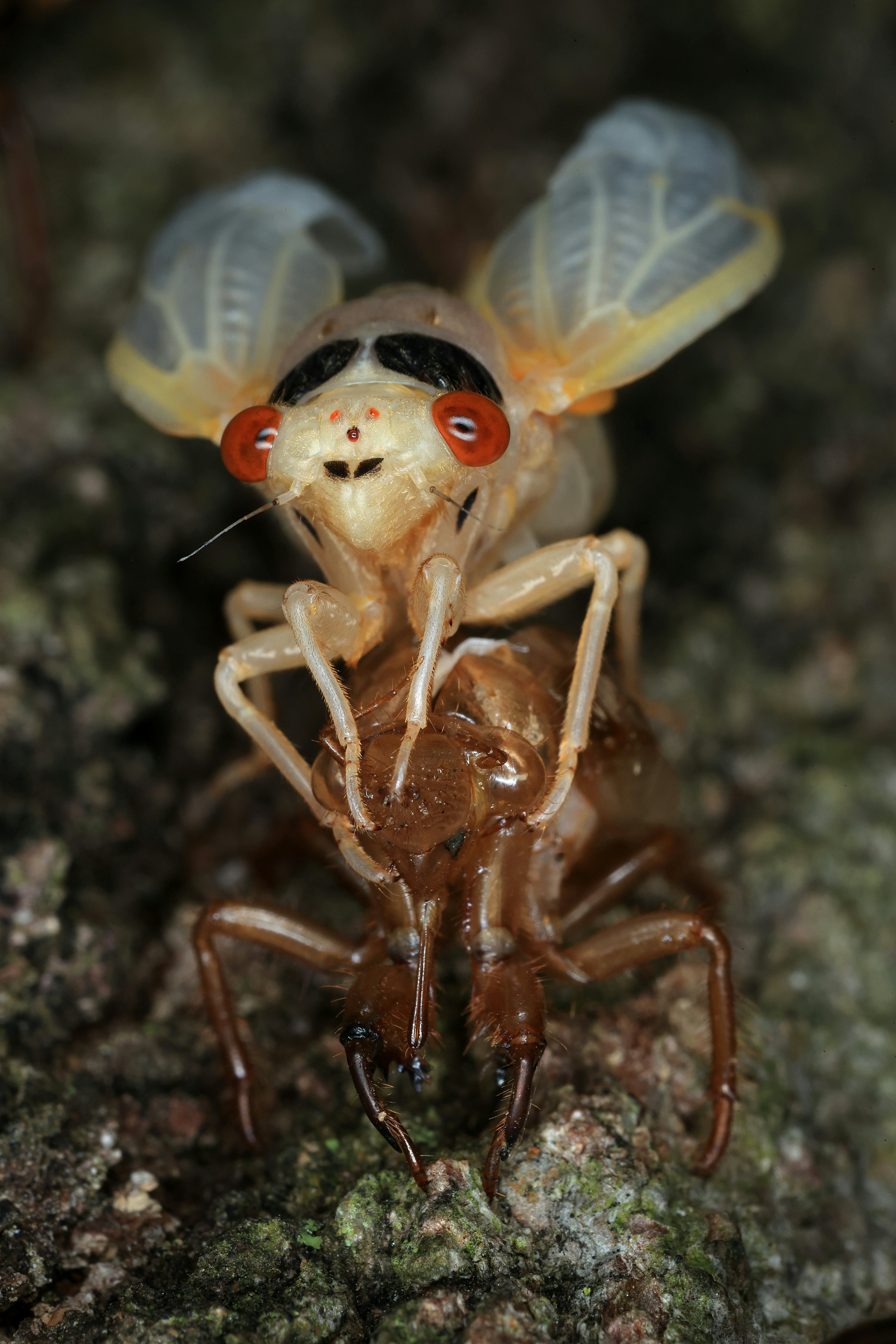
Once the cicadas leave this summer, there will be trillions more beneath our feet doing what, exactly? Not hibernating — we know that much for sure.
We only see periodical cicadas – our current screaming, red-eyed insect visitors – for a few weeks, but these insects live 13 years (Brood XIX) and 17 years (the confusingly-named Brood XIII). That’s a tremendous lifespan for an insect, and cicadas spend 99% of that time in burrows about 2 feet underground.
“Keep in mind, the cicadas are not underground doing nothing,” University of Connecticut entomologist John Cooley told Inverse in an email.
So what are they doing down there in the dark?
“We don’t know a lot about what happens underground because we can’t see it,” says Georgetown University entomologist Martha Weiss in a recent statement. We mostly know the broad strokes: they drink from tree roots and slowly grow, shedding their skin every few years. And somehow they know when it’s time to dig their way to the surface for a few weeks of sunlight and screaming.

They’re Awake, and They’re Hungry
The trillions of cicada nymphs hiding in the ground at any given moment are wide awake down there, but University of Connecticut biologist Chris Simon says they’re not up to anything sinister: “They are not lurking or threatening,” she says. “They are innocently feeding on tree roots.”
Cicada nymphs their needle-like mouths to drink watery fluid, called xylem, from tree roots. Every few years, the nymphs have to shed their hard exoskeleton to give their squishy bodies more room to grow.
Each stage between sheddings is called an instar; when the cicada nymphs first burrow into the ground after hatching, they’re in their first instar. By the time they emerge from the ground, they’re in their fifth, and it’s time for one last molting: the one that turns them into adults for a few loud, frantic weeks.
But cicada nymphs aren’t the only hungry ones down there. While they’re feeding from tree roots, they’re also easy prey for other hungry creatures.
“When they’re really, really tiny, they’re good food for ants,” Simon tells SciLine. “And as they get larger and larger, they are food for underground mammals like moles and shrews.”
“As far as we know, they don’t move around much, and they don’t communicate with one another,” says Weiss. Based on what scientists know about cicada nymphs’ underground habits, it seems that as soon as a cicada hatches, the first-instar nymph makes its way down from its tree branch (some with more grace than others) and immediately burrows into the ground. Once there, it finds a tree root to latch onto and start feeding, and for the next decade and change, it moves only to shed its skin.
They’re Counting, Somehow
Cicadas are, by insect standards, big and slow, and they don’t have stingers, sharp mandibles, or venom to defend themselves with. All they have is the vague hope that their broodmates are slower and tastier-looking than they are. Any given cicada’s life (or at least the last few weeks of it) depends on digging its way to the surface at about the same time as trillions of others.
And somehow, in their little underground burrows with their tiny needle-mouths plugged into tree roots, they know when it’s time. Simon suggests there’s a molecular clock involved, set by seasonal changes in the glow and chemical makeup of the xylem flowing through the root. Weiss also suggests that the annual changes in xylem flow probably help the insects keep time.
“The cicadas seem to sense and somehow count the annual fluxes in this movement of xylem fluid through the roots,” she says.
Cicada nymphs can also sense the temperature of the soil around them, and once their inner clocks tell them it’s the right year, they wait for the soil temperature to signal the big day. And they’re usually right: about 70% of the cicadas in an emerging brood reach the surface within the first few days, and the rest usually aren’t more than a few days behind.
Even for insects, teamwork makes the dream work.







